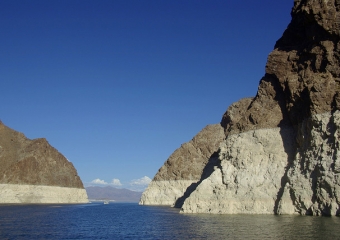

Photo by Adam Baker is licensed under CC BY 2.0
California – land of lush wine country vineyards, beautiful beaches, fabulous parks and green space. That picture is not as bright or accurate as it once was. According to the State of California’s Weekly Drought Update, water shortages have reached critical stages.
Wildfires are all too common, almost 2,000 wells have dried up and the ground in California is literally parched throughout the state. Almost 20 million people live in areas of exceptional drought. There is not enough water.
And, it is not just California. The country is experiencing the worst drought in more than 1,000 years. Think about that…it is frightening.
Most of the western part of the United States is locked in a drought that has continued for four years. The states suffering most are Texas, Kansas, Arizona, Colorado, Oregon, Oklahoma, Utah, Nevada and, of course, California.
The extreme drought has persisted over the last four years. With all signs pointing to no options for immediate relief, this situation begs some critical questions:
- What can be done?
- How much will it cost?
- Should this have been anticipated?
The answers are simple:
- Yes, there are ways to get water relief, but elected leaders have been slow in responding. There is no way to tell if that is going to change.
- It will require more funding than local or state governments have access to, so private capital, tax exempt bonds and other alternative funding sources will have to be tapped. Elected officials know this, but have moved slowly.
- Yes, this should have been anticipated. Pipelines are old and they leak and break. Additionally, demand for water has increased at an unbelievable pace. Finally, while it is not possible to predict weather patterns, there are indications that the effects of global warming are creating some of the nation’s water problems.
Now, as California enters the fourth consecutive summer of drought, finger-pointing is at an all-time high. Some claim that California’s agriculture industry, given the thousands of gallons of water it requires for livestock, deserves the blame. Add to that all of the food producers who ship products throughout the world and who know that many people blame them for the problem because every type of food product requires water. Others accuse the water-bottling industry for taking huge amounts of local water and shipping it to other parts of the United States. There are dozens of other speculations as people attempt to place blame but there is no one “smoking gun.” This situation didn’t happen quickly and it cannot be reversed quickly. Elected leaders are dealing with angry taxpayers, unhappy constituents and disgruntled industry groups because there are no quick resolutions or solutions that will please all the diverse groups.
The water situation has exposed serious water conservation issues as well as the dangers associated with aging water infrastructure. It is estimated that 2.1 trillion gallons of water are lost each year because of leaky pipes, broken water mains and faulty meters. In Los Angeles in June, a 93-year-old water main broke open and caused severe flooding on the UCLA campus. That has become the norm.
Infrastructure investments made 50-100 years ago were never intended to last a century. The drought has plummeted the country’s lakes and rivers. Lake Mead, the largest reservoir in the United States, is at its lowest level ever. The mighty Colorado River no longer flows into the ocean. According to one report, 16 million jobs and $1.4 trillion in annual economic activity is a result of the Colorado River. When one delves deeply into all the implications of a shortage of water, the only clear revelation is that the country’s economic prosperity is at risk.
At one time, people took water for granted. Not anymore. And, once, people thought water should almost be free. That’s a laughable concept today. Water theft has become common. People everywhere have realized the value of water. Without water, the nation’s food supply will be affected and prices at the grocery store will increase significantly. The fallout will be incalculable.
The big question is this…how long is it going to take for elected officials to start launching big water infrastructure projects that will result in adequate water resources for the immediate future as well as the next century?
If ever we needed bold leaders, it is now!
